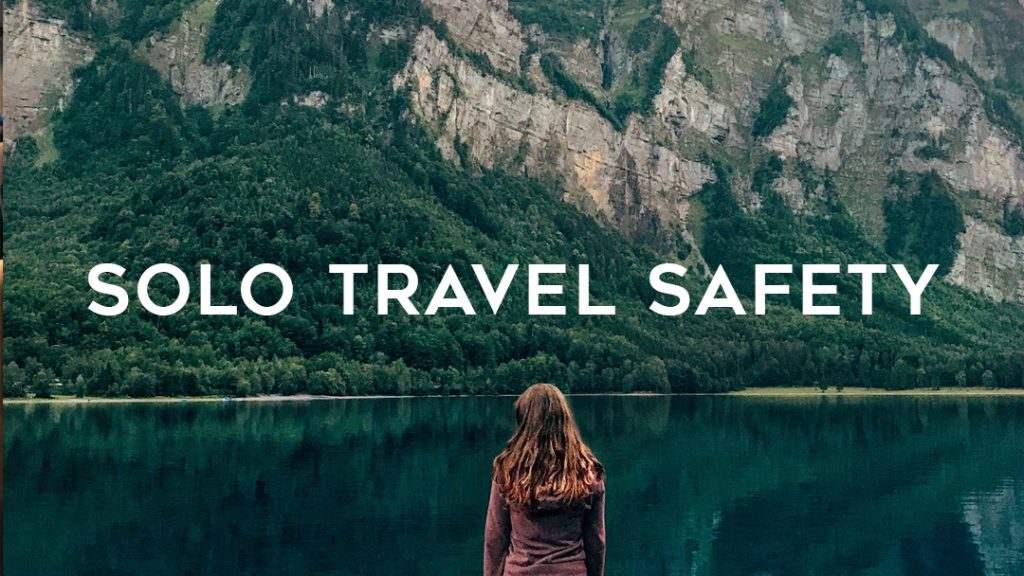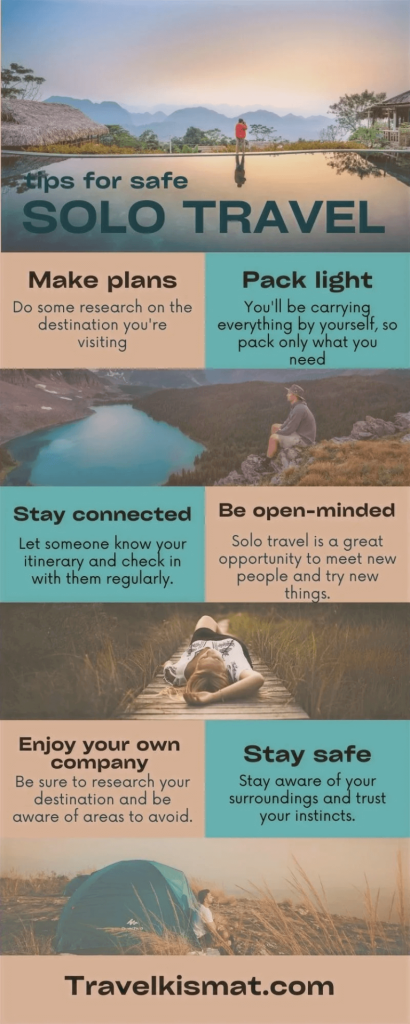

Solo travel, with its allure of independence and self-discovery, often takes travelers to unforeseen challenges, necessitating constant vigilance and awareness. Solo travel, while offering freedom and a unique opportunity for self-exploration, demands a proactive approach to safety and security. It’s not simply about packing light; it’s about staying aware of your surroundings, planning ahead, and recognizing potential risks. This article explores the crucial aspects of staying safe and mindful during solo journeys, equipping travelers with practical strategies and insights. We’ll delve into essential safety precautions, effective communication methods, and proactive measures to ensure a memorable and secure solo adventure. The structure of this article will cover essential planning strategies, proactive safety measures, and effective communication methods, all crucial for a safe solo trip. We will also explore best practices for staying alert and maintaining awareness throughout the journey.
Essential Planning Strategies for a Safe Solo Trip
Pre-Trip Research and Preparation
Before embarking on any solo journey, thorough research is paramount. Understand the local customs, laws, and cultural nuances of your destination. Research potential risks, such as areas with high crime rates, political instability, or natural disasters. Be aware of the potential weather conditions, local emergencies, and transportation logistics. Thorough preparation minimizes potential risks and maximizes your safety, peace of mind, and overall enjoyment.
Proactive Safety Measures: Staying Alert and Aware
Situational Awareness
Developing strong situational awareness is crucial for any solo traveler. Pay attention to your surroundings—who is around you? Are there any potential threats present? Don’t be afraid to step away from areas that seem unsafe and stay in well-lit, populated places. Stay alert, notice any suspicious activity, and trust your instincts. These practices help create a safer environment for solo travelers. Recognize potential hazards; understanding your surroundings and acting proactively helps to avoid uncomfortable or dangerous scenarios.
Effective Communication Methods: Staying Connected
Inform Someone of Your Itinerary
Always inform someone, be it a friend or family member, about your travel plans and expected return dates. Share your itinerary, lodging details, and contact information, ensuring someone knows where you are and when to expect you back. Providing details about your journey helps to ensure your safety and helps establish communication channels in case of emergencies. This proactive measure can significantly ease worries for concerned parties, ensuring that you have a network to support you.
Maintaining Vigilance During the Journey
Security Measures on Public Transportation and Accommodations
Take necessary security measures when using public transportation or staying in accommodations. Stay aware of your surroundings on public transport. When traveling by bus, train, or plane, take note of suspicious characters or activity. Secure your belongings and avoid carrying large amounts of cash. When in doubt, ask for help and be assertive about your safety. Be mindful of your belongings and safety when traveling on public transportation and in accommodations. Be cautious about leaving valuables in plain sight.
Adaptability and Flexibility
Adapting to Unforeseen Circumstances
Solo travel frequently involves unexpected events, so being adaptable is essential. Things can and often do go wrong, making it necessary to adjust your plans if needed. This may involve changing your itinerary, adjusting your budget, or finding alternative accommodations. Develop a plan B and be prepared to improvise if unforeseen circumstances arise. Flexibility in your travel plans ensures that unforeseen challenges don’t derail your trip and minimizes the impact of disruptions.
Importance of Health and Well-being
Prioritizing Personal Safety and Emergency Preparedness
Prioritize your physical and mental well-being. Stay hydrated, eat healthy, and get sufficient rest. Know how to access medical assistance, in case of emergencies, when traveling alone. Carry necessary medications, first-aid supplies, and emergency contact information. Take steps to protect yourself, both physically and emotionally, throughout your solo trip. Ensure you’re aware of local medical facilities and potential health hazards in advance.
Staying Connected and Informed
Utilize Technology for Safety and Navigation
Stay connected with reliable technology. Utilize GPS navigation, messaging apps, and social media platforms to stay connected with loved ones. This can provide peace of mind and help with emergencies. Download offline maps or use apps for directions and navigation if internet access is limited. Utilize technology wisely to stay informed and connect while maintaining safety throughout your journey.
Embracing the Journey
Cultural Sensitivity and Respect
Be respectful of local customs and traditions. Learn basic phrases in the local language, and try to blend into the community without attracting attention or acting inappropriately. Learn about the local etiquette to avoid any issues and demonstrate cultural sensitivity and respect.
Handling Emergencies
Emergency Preparedness and Contacts
Knowing what to do in case of an emergency is vital. Familiarize yourself with local emergency numbers, embassy contacts, and important websites for travelers. Develop a plan in advance for contacting help in different scenarios and ensure you are aware of your rights and how to access help in case of emergencies.
FAQ
What are the most common safety concerns for solo travelers?
In conclusion, solo travel, while offering immense rewards, demands constant vigilance and awareness. Understanding potential risks, planning meticulously, and staying connected are crucial for a safe and fulfilling solo journey. By prioritizing safety, staying informed, and being adaptable, travelers can transform solo adventures into unforgettable experiences. Ready to embark on your solo journey? Start planning today and prioritize safety throughout your adventure! For further insights into solo travel safety, explore additional resources available online.